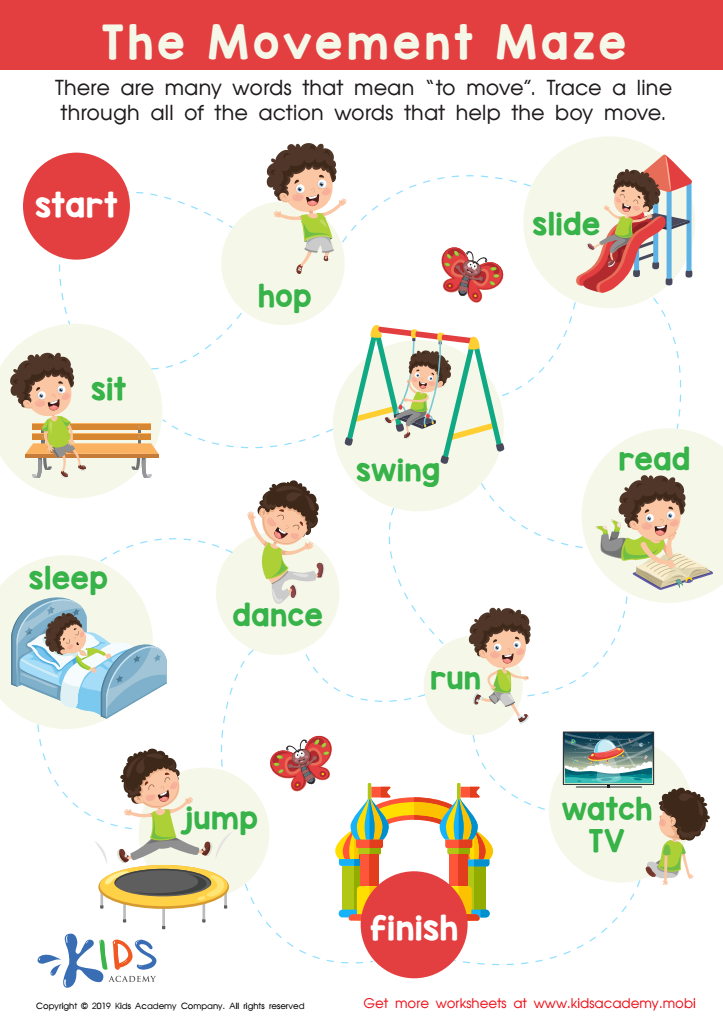Spatial awareness Normal Reading Worksheets for Ages 4-7
3 filtered results
-
From - To
Boost your child's reading and spatial skills with our Spatial Awareness Normal Reading Worksheets for Ages 4-7 from Kids Academy! Designed to cultivate vital cognitive abilities, these engaging activities help young learners understand positional concepts, improve visual perception, and enhance their overall reading experience. Perfect for children ages 4 to 7, these worksheets offer fun, interactive exercises to support development in a foundational and enjoyable way. From identifying patterns to navigating space in stories, our worksheets are crafted to make learning seamless and exciting. Equip your child with essential tools for kindergarten and beyond!


Where Is the Ant? Worksheet


The Movement Maze Worksheet


Fairy Tales Maze Worksheet
Spatial awareness and reading are two fundamental skills in early childhood development that significantly influence a child's future academic success and daily life functioning. Parents and teachers should care about spatial awareness because it helps children understand their physical world and their relationship to objects within it. This skill is crucial for everyday tasks such as navigating spaces, drawing, building, and understanding mathematical concepts like geometry. Improved spatial awareness also enhances a child's ability to solve problems, recognize patterns, and develop critical thinking.
Normal reading development for ages 4-7 is equally important because this period is a foundational time for literacy skills. Early reading abilities, including recognizing letters, understanding phonics, and developing vocabulary, set the stage for more advanced learning. A solid reading foundation supports academic achievement across all subjects, fosters independence, boosts self-confidence, and ignites a lifelong love of learning.
When parents and teachers focus on nurturing both spatial awareness and reading skills, they equip children with a robust toolkit for school and life. Through play, exploration, and guided learning, children develop these crucial abilities, making the transition to more complex tasks and higher education smoother and more enjoyable. Thus, fostering spatial awareness and reading in young children is an investment in their future success and well-being.

 Assign to My Students
Assign to My Students




.jpg)

.jpg)









